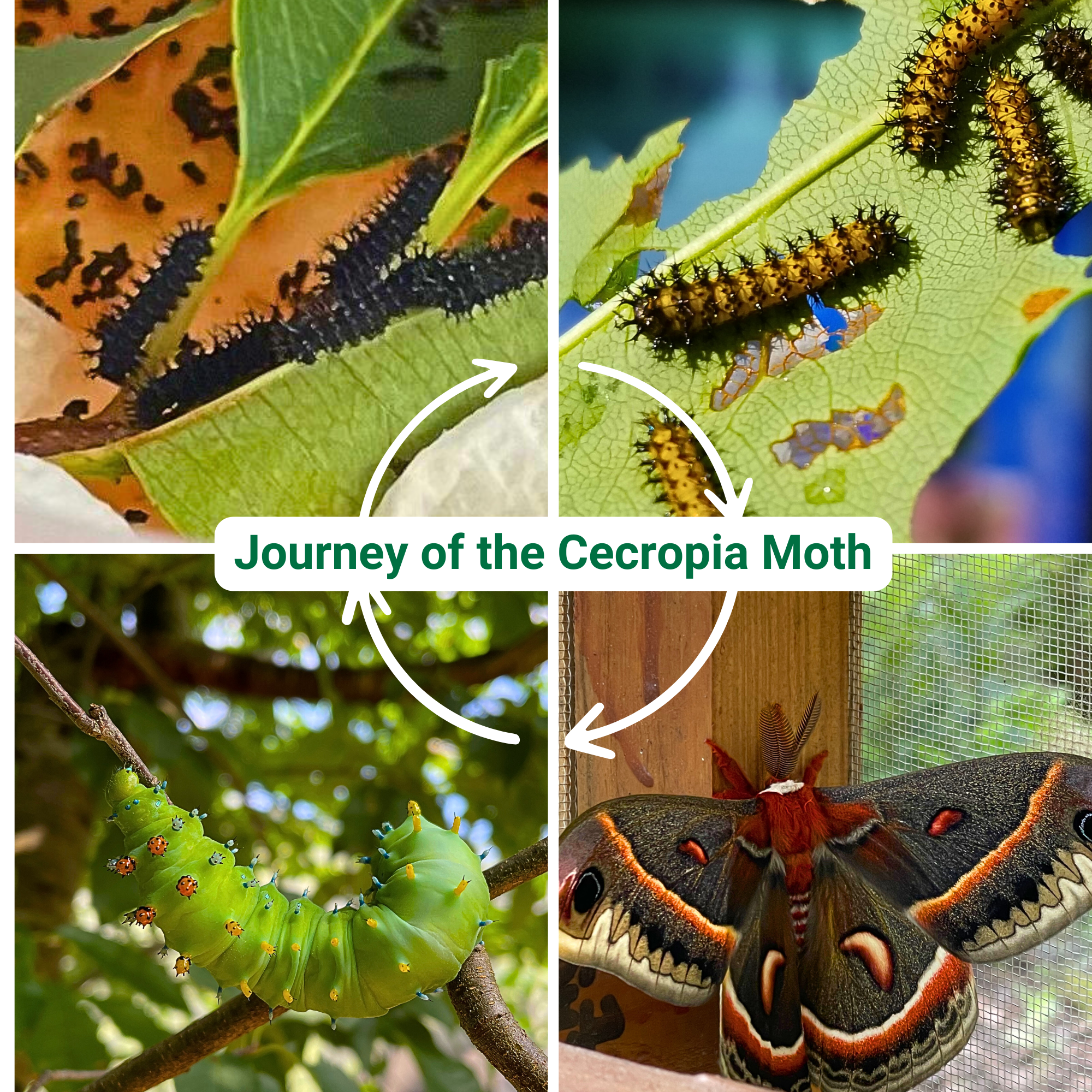An Abundance of Life
Connecting people to the natural world is one of the most important steps in encouraging appreciation and protection of the environment. As an environmental science student, this is an effort I hope to continue making throughout my career. My summer internship in Tyler’s Pollinator Preserve involved doing just that: showcasing the beauty and functionality that exist when humans work with nature — not against it.
The abundance of pollinator-pleasing plants in our Pollinator Preserve has been full of diverse life this summer. Native bees, butterflies, beetles, wasps, flies and occasionally, to our dismay, hungry bunnies have all found their way to this oasis. While no species is more important than another, one species stood out – the Cecropia Moth!
A Fascinating Cycle Begins
Our fleet of Cecropia Moths has captured visitors’ attention in every stage of their life cycle this summer. A long-time volunteer has been providing cecropia eggs to Tyler for years so we can continue to observe and share these fascinating creatures with our visitors. This year we received more eggs than usual – over one hundred! This was far more than expected, but we took the challenge head-on.
We placed some eggs on our black cherry tree (one of their host plants) and kept an eye on the other eggs as we waited for them to hatch. I like to joke that I became a mother this summer, as I took many of the eggs home to hatch safely, then brought the tiny caterpillars back to Tyler where they sat front and center at the Pollinator Preserve for everyone to admire as they began to grow (and grow and grow).
During the first week of my internship in early May, I carefully secured the previous year’s cocoons to the sides of one of our rearing cages in the Pollinator Preserve. Doing this allowed them to emerge safely, and everyone could easily see their beautiful coloring and enormous size. At this point, I have seen every stage of this magnificent creature’s life cycle, from cocoon to moth to egg through their five instars (growth stages of a caterpillar), and soon enough back to cocoon.

Cecropia moths, the largest native moth in North America, are in the giant silk moth family and boast a wingspan of up to seven inches. As caterpillars, they grow up to 4.5 inches and spend ten months in cocoons before living only two weeks as adults. Cecropias do a year’s worth of eating in their pupal stage and then emerge as mouthless moths whose sole purpose is to find a mate and reproduce! They are very good at it too – females release powerful pheromones detectable by male cecropias from a mile away.
As popular bird and insect prey, only 3-5% of wild caterpillars survive to become adults. Since this is how it is meant to be, we don’t aim to save every caterpillar at the Pollinator Preserve. For those we do protect, we try to keep their environment as natural as possible. We placed some directly on the black cherry tree in the Pollinator Preserve, covering several branches with a netted “sleeve”, giving them more food and space but with added protection from hungry birds. Others remained in the rearing cage before being released into the wild.
The Journey Continues
In just a few weeks, the caterpillars will spin their cocoons, where they will spend the next ten months until next June when visitors can enjoy them for another season. Come see the caterpillars by early to mid-August in the Pollinator Preserve so you don’t miss their final stages!
While the Cecropia moths were my babies for a bit, they were just one part of my experience at Tyler. My summer has been full of learning, connecting, and growing as an advocate for nature. I hope to continue working with and for my community, embracing and protecting the natural environment, and promoting positive change.







